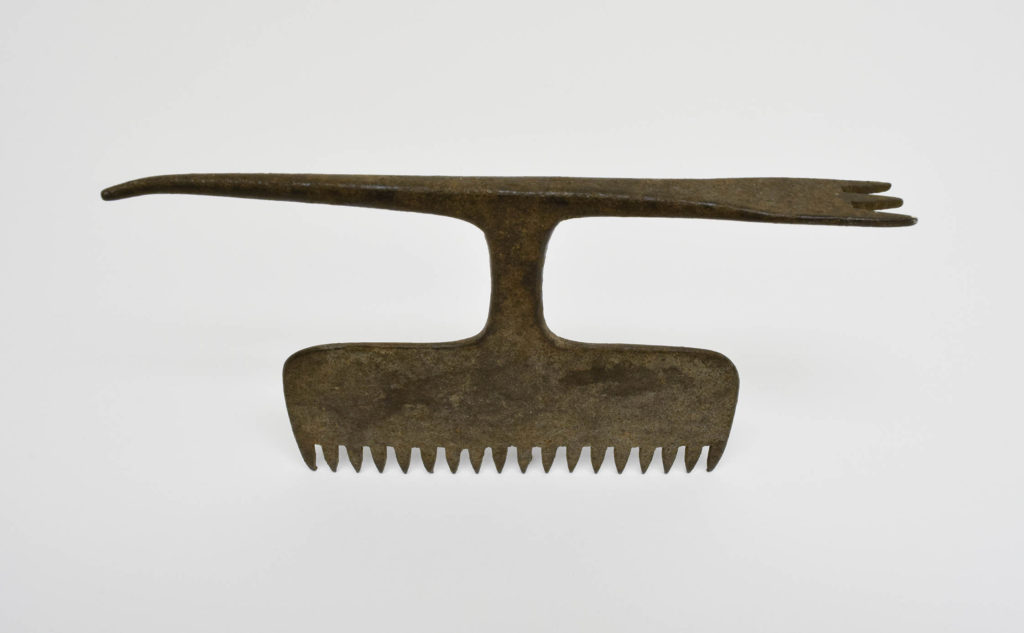Matzo Comb
Germany, late 18th century
Iron, h. 3 ½ x w. 6 ¾ in.
Cincinnati Skirball Museum, 35.6
A major spring festival, Passover commemorates the Jewish exodus from Egypt. During Passover we are reminded of the struggles endured by the Jewish slaves in Egypt. Many of the foods prepared for Passover are rich in meaning and help to convey the Passover story. The most ubiquitous food of Passover is matzo, an unleavened bread, which is representative of how hurried the Jews were when they were finally freed from slavery. The bread that they were baking did not have time to rise before they were chased out by the Egyptians. Thus, matzo became the quintessential Passover food staple.
Before industrialization of the matzo-making process, uniform perforations in a sheet of matzo were made using a matzo comb. Such combs were historically designed as straight instruments, like this one, or as spiked wheels that could be rolled across the dough. The process of scoring matzo was rendered largely obsolete by the industrialization of the process in 1888 with innovations made by Dov Behr Manischewitz.


